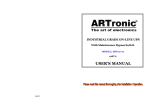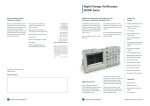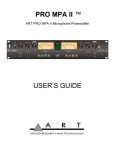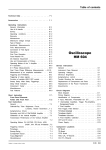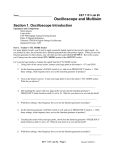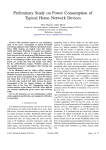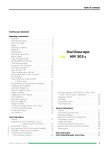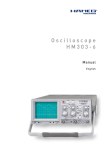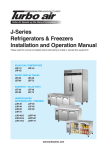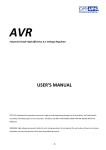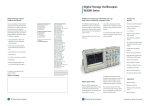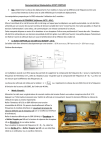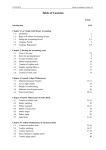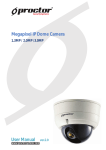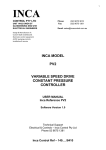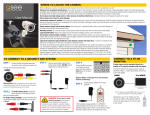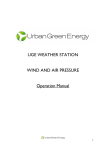Download USER`S MANUAL - MPP Solar Inc
Transcript
INDUSTRIAL GRADE ON-LINE UPS SP SERIES 5KVA~ 20KVA USER’S MANUAL CONTENTS Contents Page 1. SAFETY INSTRUCTION…. ......................................................... P. 2 2. INTRODUCTION…. ..................................................................... P. 4 3. LCD PANEL DISCRIPTION ......................................................... P. 5 4. UNIT REAR VIEW........................................................................ P. 7 5. INSTALLATION.......................................................................... P. 10 6. OPERATION .............................................................................. P. 12 7. TROUBLE SHOOTING GUIDE.................................................. P. 14 8. CUSTOMER SERVICE .............................................................. P. 15 9. COMMUNICATION PORT ......................................................... P. 17 10. PRODUCT SPECIFICATION ................................................... P. 18 ♣♣ Item A. B. C. D. E. F. G. H. TESTING INSTRUMENT ♣♣ Description Brand 4 Channel Oscilloscope Tektronix Power Quality Analyzer Fluke Digital Multimeter Fluke 2 Channel Memory Oscilloscope HAMEG DC Current Meter 0-30A YOKOGAWA Distortion Meter (3~100KW) GoodWill AC Power Source 300~500VAC Dummy Load 1 Model No. TDS2014 43B 87IV HM205-3 Y-30 201G 1. SAFETY INSTRUCTION 1.1 Transport Please transport the UPS system only in the original packaging (to protect against shock and impact). 1.2 Set-up Condensation may occur if the UPS system is moved directly from a cold to a warm environment. The UPS system must be absolutely dry before being installed. Please allow an acclimatization time of at least two hours. Do not install the UPS system near water or in damp environments. Do not install the UPS system where it would be exposed to direct sunlight or near heat. Do not block off ventilation openings in the UPS system’s housing. 1.3 Installation Do not connect appliances or items of equipment which would overload the UPS system (e.g. Laser printers) to the UPS outlet socket Place cables in such a way that no one can step on or trip over them. Do not connect domestic appliances such as hair dryers to UPS output sockets. 1.4 Operation Do not disconnect the mains cable on the UPS system or the building wiring socket outlet (shockproof socket outlet) during operations since this would cancel the protective earthing of the UPS system and of all connected loads. The UPS system features its own, internal current source (batteries). The UPS output sockets or output terminals block may be electrically lived even if the UPS system is not connected to the building wiring socket outlet. Ensure that no fluids or other foreign objects can enter the UPS system. The UPS operates with hazardous voltages. Only qualified maintenance personnel may carry out repairs 2 1. SAFETY INSTRUCTION 1.5 Maintenance, servicing and faults The UPS system operates with hazardous voltages. Only qualified maintenance personnel may carry out repairs. Caution - risk of electric shock. Even after the unit is disconnected from the mains power supply (building wiring socket outlet), components inside the UPS system are still connected to the battery and are still electrically live and dangerous. Before carrying out any kind of servicing and/or maintenance, disconnect the batteries and verify that no current is present and no hazardous voltage exist in the terminals of high capability capacitor such as BUS-capacitors. Only persons are adequately familiar with batteries and with the required precautionary measures may replace batteries and supervise operations. Unauthorised persons must be kept well away from the batteries. Caution - risk of electric shock. The battery circuit is not isolated from the input voltage. Hazardous voltages may occur between the battery terminals and the ground. Before touching, please verify that no voltage is present! Batteries may cause electric shock and have a high short-circuit current. Please take the precautionary measures specified below and any other measures necessary when working with batteries: - remove wristwatches, rings and other metal objects - use only tools with insulated grips and handles. When changing batteries, install the same number and same type of batteries. Do not attempt to dispose of batteries by burning them. This could cause battery explosion. Do not open or destroy batteries. Escaping electrolyte can cause injury to the skin and eyes. It may be toxic. Please replace the fuse only by a fuse of the same type and of the same amperage in order to avoid fire hazards. Do not dismantle the UPS system. 3 2. INTRODUCTION 2.1 Thank you Thank you for selecting this uninterruptible power supply (UPS). It is a state-of-the-art electronic UPS that uses the latest technology. 2.2 System Description The SP-series UPS is advanced true on-line sinewave UPS which provided reliable regulated, transient-free AC power to sensitive equipment, ranging from computers & telecommunication systems to computerized instrument. Because the UPS is a true on-line system, conditioned power is provided continuously to the connected device. Unlike the other standby UPS, the UPS is constantly regulating, filtering the output power. When incoming power is blackout, the UPS protects the computers instantaneously without any transfer time. The SP-series UPS has high nonlinear load current capability (i.e. Crest Ratio 3:1) and this is suitable for powering special load such as switching power supplies. The bypass function provides bypass power as its standby source. During an overload condition, the system will automatically transfer to the bypass line (if a good power exists) within 4 milliseconds to ensure the critical load in normal operation. The system can transfer back to inverter automatically (when the overload condition has been cleared) within 4 milliseconds to ensure the critical load in normal operation. MAINTENANCE SWITCH (Option) BYPASS AC OUTPUT INPUT Inverter MCCB1 Charger External Battery Battery MCCB2 (Optional) External MCCB Figure 1-1 System Diagram 4 3.2.PANEL DESCRIPTIONS 1. LCD STATUS DISPLAY: UPS monitor its function by itself; such monitoring messages are displayed in the MULTIPLE DISPLAY. 2. LINE / AC INPUT (Green): The Indicator is ON when the incoming utility power is available. 3. BYPASS (Amber): The indicator is ON when the UPS output power is supplied from the incoming power source. 4. LOAD (Red): When the load is over 100W, the indicator would illuminate. When it reaches over 100% load, UPS would emit an audible alarm sound continuously for 20seconds. 5. INVERTER FAULT (Red): The indicator is ON when UPS is in faulty condition and would emit continuous audible alarm sound. Note: When the unit is at fault condition, please refer to the paragraph 4. Table and figures. 6. BATTERY (Red): The indicator is ON under these situations: a) When AC main power fail, b) AC in under/over voltage c) Battery discharge reach to a low level, and automatically UPS would emit a quick alarm reminding that battery has a few energy can be used. 7. INVERTER (Green): The indicator is ON when the UPS Inverter is operating properly. 5 3.2.PANEL DESCRIPTIONS 8. ALARM RESET : Press it to stop buzzer alarm. 9. POWER ON-Push Button: Press it to start the UPS. 10. POWER OFF-Push Button: Press it to shut down the UPS. If the AC mains exist, the unit will transfer itself to BYPASS output. 11. MENU/AUTO-Push Button: When press once at a time, it will display the following sequence of messages: a) Input Voltage / Frequency b) Output Voltage / Frequency c) Current / Percent of Load d) Battery Voltage / UPS Operating Temperature When presses for 3 seconds, it will display above messages in an automatic cycle. 6 4. UNIT REAR VIEW (FOR SP-50~SP-80) 1. 2. 3. Communication Port (DB9 / RS232) Ventilation Fan Output Sockets 4. 5. Output Fuse MCCB: To control the AC Input and Battery voltage. switched on to provide the UPS power. 7 The MCCB should be 4. UNIT REAR VIEW (FOR SP-100~SP-200) BATTERY PACK UPS SYSTEM 1. Communication Port (DB9 / RS232): UPS signal passes through DB9 enabling messages to be displayed into computer monitor. 2. Ventilation Fan 3. Bypass / No Fuse Breaker (MCCB2): Switch on when output power is supplied from bypass. 4. Inverter / No Fuse Breaker (MCCB1): Control the battery bus and rectifier voltage from AC Power input. 5. Terminal Block: To connect Input / Output connecting wires of power source and battery pack. 6. Battery / No Fuse Breaker at Battery Back a) Switch ON to generate battery power into UPS. b) Switch OFF ceasing the flow of battery power. 7. Terminal Block: Wires schematic diagram connecting battery pack and UPS. 8 4. UNIT REAR VIEW (FOR SP-100~SP-200) *** Wiring Connection when input voltage is 3 phase system 9 5. INSTALLATION The system may be installed and wired only by qualified electricians in accordance with applicable safety regulations! 5.1 Unpacking & Inspection (1) Unpack the package and check the package contents. The shipping (2) package contains: A UPS A User Manual Inspect the appearance of the UPS to see if there is any damage during transportation. Do not turn on the unit and notify the carrier and dealer immediately if there is any damage or lacking of some parts. 5.2 Notes for Installation (1) (2) The UPS must be installed in a location with good ventilation, far away from water, inflammable gas and corrosive agents. Ensure the air vents on the front and rear of the UPS are not blocked. It is recommended to retain 10cm from the wall. (3) Condensation to water drops may occur if the UPS is unpacked in a very low temperature environment. In this case, it is necessary to wait until the UPS is fully dried inside out before proceeding installation and use. Otherwise, there are hazards of electric shock. (4) Put the unit in a plain. 5.3 Installation & Starting (1) (2) (3) Installation and wiring must be performed in accordance with the local electric code and the following instructions by professional personnel. For safety, please cut off the mains power switch before installation. Open the terminal block cover located on the rear panel of the UPS, please refer to the appearance diagram. (4) Check the power requirement label at the rear panel of the UPS, use a Digital Multi-meter (DVM) to check the input and output voltage accord to your ordered specification. (5) Find the battery breaker on the rear panel of battery bank and turn it on as well as MCCB1 and MCCB2. The indicators of “LINE”, “BYPASS”, “INVERTER” and “FAULT” will all light on. If AC mains exist, the fans on the rear panel operate with AC power outputs (BYPASS). 10 5. INSTALLATION (6) Connect the input and output wires to the corresponding input and output terminals according to the following diagram. Note:You must make sure that the input and output wires and the input and output terminals are connected tightly. (7) Press the “ON” button on the front panel, the fan on the front panel operates, and UPS detect itself automatically at once. After 25 seconds, “BYPASS” extinguishes and “INVERTER” remains illuminating. (8) Connect the input and output wires to the corresponding input and output terminals according to the following diagram. Use a Digital Multi-meter (DVM) to check the voltage. NOTE: You must make sure that the input and output wires and the input and output terminals are connected tightly. (9) The protective earth ground wire refers to the wire connection between the equipment which consumes electric equipment and the ground wire. The wire diameter protective earth ground wire should be at least as above mentioned for each model and green wire or green wire with yellow ribbon (10) (11) (12) wire is used. To connect the load with the UPS, please turn off all the loads first, then perform the connection and finally turn on the loads one by one. No matter the UPS is connected to the utility power or not, the output of the UPS may have electricity. The parts inside the unit may still have hazardous voltage after turning off the UPS. To make the UPS have no output, power off the UPS, and then disconnect the utility power supply. The UPS now is ready for working, connecting the critical equipment to the output terminal blocks. NOTE : a. Keep power continuously for 12 hours at the first start to ensure the battery fully charged. It is recommended to press “OFF” button on the front panel but open the circuit breaker MCCB1 during charging. b Do not touch the external battery terminals, there is high DC voltage remains. c Do not short-circuit wires at the external battery terminals block. d Make sure the battery polarity is correct. 11 6. OPERATION 6.1 Check Prior to Start UP (1) Ensure the UPS is in a suitable positioning. (2) Check input cord is secured. (3) Make sure the load is disconnected or in the “OFF” position. (4) Check if input voltage meets the UPS rating required. 6.2 Start-up Procedure (1) Turn on the circuit breaker. (2) Push the “ON” switch on the front panel. (Blue color switch) (3) Turn on the power breaker of your critical equipment. 6.3 Turn OFF Procedure (1) Turn off all the power breakers on your critical equipment which are connected to the UPS. (2) Press the “ON/OFF” buttons on the front panel. (3) Turn off the NFB (MCCB1 & MCCB2) on the rear panel. NOTE : a. The NFB can be kept in “ON” position to charge the batteries when the line input is normal. b. For daily TURN ON / TURN OFF operation, it is recommended to keep the breaker turned on to ensure proper battery operation. WARNING : If the breaker is in “ON” position, the line power will be supplied to outlets. Do not insert objects other than equipment power cords into the outlets. 6.4 Working (1) When utility power is interrupted, the UPS converts the built-in battery source to protect your critical load from loss of data or damage. (2) Battery back-up time is 10 - 15 minutes for full load and can be extended by removing non-critical loads. (3) After utility power black-out, the audible alarm will sound every 4 seconds to show that output is backed-up by battery source. (4) When audible alarm speeds up and sounds every 1 second, data should be saved and all loads should be shut down at once. 12 6. OPERATION NOTE : a. Follow the application software in use as well as the computer manufacturer’s instructions for saving data and turning off the computer. b. After a blackout, keep the breaker (MCCB1) “ON” for at least 10 hours to ensure the batteries are fully recharged. 13 7. TROUBLE SHOOTING GUIDE The Meaning of Indicators and Alarm Indicators and Alarm Line INV Battery Bypass Load Input ON ON ON OFF ---OFF ON Flashing OFF ---- Recommended Condition Solution Fault Buzzer OFF OFF NO Normal Every Normal, AC mains 4 sec. failure. UPS is charging batteries. NO UPS works on BYPASS ON OFF ON ON ---- ON --- --- ON or Flashing ---- ON OFF ON Flashing OFF ON OFF --- ON ON OFF ON OFF ON --- ON --- ---- OFF --- ON ON or Flashing OFF ON ON ON --- ON --- ---- OFF OFF Status Close your software and files in use. Press “ON” the Main Switch on the front panel first Conti- UPS is at overload Remove nuous condition nonessential load equipment. Every Normal, battery Close your files 1 sec. will discharge and software in completely. use. Conti- The output circuit Remove the short nuous is shorted. circuit and start the UPS again. Conti- UPS works on Warming only nuous INV. or BYPASS, without affecting while the input UPS operation. voltage is more than 270V Conti- UPS interior gets UPS will transfer nuous too hot as it has to BYPASS mode. been worked on INV. for a period of time. Conti- UPS works on Call for service, if nuous INV. or BYPASS. UPS works on INV.. Whereas, the UPS work on BY-PASS is because the AC voltage is too high. 14 8. CUSTOMER SERVICE There are no serviceable components inside. Do NOT open the cover or attempt to service the unit. High voltage may remain even when the unit is shutdown. Unauthorized service will void the warranty and may cause serious injury. 8.1 Maintenance The unit is designed for easy maintenance. Only a little customer maintenance is required. The following works will keep ensure trouble-free operation. (1) Vacuum the dust from the ventilation in-take on the front panel. (2) Wipe the cover with a damp cloth. (3) Periodically switch off the AC supply to the UPS to check the operation of the UPS and the battery condition (Before testing, be sure to save any data files in use). (4) Cautions: a. Follow the instruction manual to operate it. b. After a power failure, keep power applied continuously to the UPS for at least 12 hours to ensure that the batteries are fully recharged. c. After total battery discharge, the UPS will automatically shutdown by itself to protect the batteries from over discharge. When the incoming power recover, the UPS will reset automatically. (4) Storage Instructions: a. Leave the UPS plugged in for 24hours prior to storage. b. Store the UPS in a cool, dry environment (Below 80℉ / 27℃). c. Remove from storage and repeat step 1 every 90days. d. Disconnect the power cord from the AC supply socket during storage. 8.2 Trouble Shooting Due to the unique design, the unit must be serviced by authorized person only. If the UPS fails to operate properly, turn off the power first and review the following check list. Be prepared to answer the following question before calling for service. (1) Is the AC supply power rating correct? (2) Is the power cord connection loose? (3) Turn ON the Main Switch again. Does the UPS return to normal operation? (4) Did a power failure occur just after or before the malfunction was noted? 15 8. CUSTOMER SERVICE (5) What is the status of the indicator at the time of the malfunction? And on restarting the UPS? (6) Where any changes made to the UPS or the critical device attached to the unit? (7) Did overload condition happen? If so, remove non-critical loads from the unit and go through the restart procedure. (8) In addition, check the fuse or breaker on the rear panel. Is the fuse busted or the circuit protector tripped? If the UPS fails to operate normally after carrying out these checks, contact our local service representative. Please note down the following information before you call for service: a. Model number & serial number. b. Date of problem c. Full descriptions of problem 16 9. COMMUNICATION PORT Power management software and interface kits can be used with this UPS. Use only kits supplied or approved by the manufacturer. If used, connect the interface cable to the 9-pin computer interface port on the back panel of the UPS. Secure the connector’s screws to complete the connection. Note: Computer interface connection is optional. The UPS works properly without it. (1) DB-9 Interface The following is the pin assignment and description of DB-9 Connector: Bypass Active Utility Failure Ground Battery Low UPS Failure Summary Alarm (2) RS-232 PIN1 (Close) : Bypass Active (Open) : UPS ON PIN2 (Close) : Utility Failure (N.O.) PIN3 (Close) : Utility Failure (N.C.) PIN4 (Ground) PIN5 (Close) : Battery Low PIN6 Auto Cut Off PIN7 Auto Cut Off PIN8 Close : Summary Alarm PIN9 Close : UPS Failure Interface Baud Rate: Data: Stop: Parity Bit: 2400bp 8bit 1bit None The following is the pin assignment and description of RS-232 Connector: PIN# DESCRIPTION I/O 6 RS232 Rx INPUT 9 RS232 Tx OUTPUT 7 Ground INPUT 17 10. PRODUCT SPECIFICATION 10.1 Electrical Specifications Model Capacity (KVA) Voltage Frequency Input SP-50 5 SP-60 SP-80 SP-100 SP-150 6 8 10 15 180V~280V (230V) / 90V ~149V (115V) 50 or 60Hz ± 5% 1Ø 2W+G / 3Ø 3W+G / 3Ø 4W+G (as client demand) 0.8 to 1 lagging Phase Power Factor Voltage 115V or 230V ± 2% 1Ø 2W+G (as client demand) Phase Voltage Regulation Output Battery Transfer Time Indicator Audible Frequency Waveform Distortion Crest Factor Overload Capacity Efficiency AC-AC Type Back up Time Recharge Time Bypass to UPS UPS to Bypass LCD Display LED Display Mains Fail Battery low UPS fault Protection Short Circuit W*H*D / (mm) UPS Net Weight (kgs) SP-200 20 ± 1% at liner load 50 or 60Hz ± 0.5Hz Pure sinewave less than 3% at full load. 3:1 100%-124% continuous, 125% -150% for 25 seconds. >80% at battery fully charge rechargeable, sealed maintenance-free 10 min. at full load and 25 min. at half load. 4-8 hours 90% after fully discharge. No break No break. Input/Output & Battery Voltage, Frequency, Output Load, Operation Temperature Mimic display Sounds every 4 seconds after line fails. Sounds every second when approaches battery low level. Continuous alarm. When a short circuit occurs, the UPS will not transfer to Bypass but emit a sustained tone. Once the short circuit is removed, the tone stops and the whole system operates normally again. The UPS stops supplying power if the period of a short circuit is longer than 3 seconds. Lightning : Yes. Surge : Yes. 270*800*660 310*900*660 360*740*870 Battery Bank ----- ----- 360*740*870 UPS 130 160 190 320 190 230 Battery Bank ----- ----- ----- ----- 200 200 10.2 Physical Specifications Relative Humidity : Audible Noise : Operating Altitude : 90% maximum at 25°C non-condensing. 55dB, ANSI A scale at 3 feet. (Above sea level) Operating Temperature 0-4,800ft 40°C (104°F) 4,800-7,000ft 38°C (100.4°F) 7,000-10,000ft 35°C (95°F) 18



















